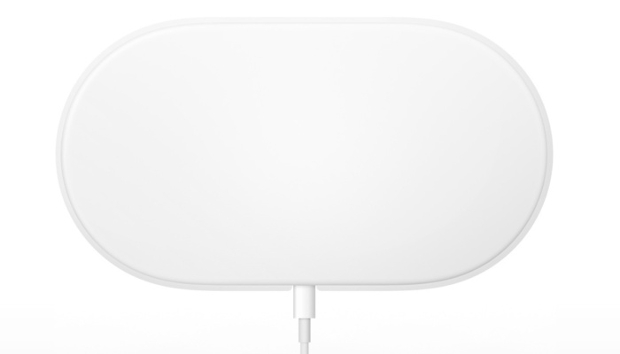
Apple’s AirPower wireless charger may already be in production
After failing to meet its own shipping timeline in 2018, Apple is now thought to have two manufacturers ramping up production of its AirPower wireless charging pad, according to a Hong Kong-based website that specialises in device charging news.
As first reported by MacRumors, the website ChargerLab tweeted that it had “just learned from credible source in supply chain” that Chinese manufacturer Luxshare Precision has begun manufacturing the AirPower multi-device wireless charger. ChargerLAB followed its initial tweet with another claiming a second Apple supplier, Pegatron, will begin manufacturing AirPower chargers on 21 January.
ChargerLab cited a Pegatron employee who said AirPower will have three layers of copper wireless charging coils, in an ‘8-7-7’ configuration from bottom to top, which will enable it to charge an an iPhone 8 or iPhone X, an Apple Watch Series 3 or 4 and AirPods via the charging case.
“Unfortunately, I think it will be at least $150,” ChargerLab tweeted.
While there may be more than a dozen multi-device wireless chargers technically available now, most do not charge both smart watches and smartphones.
The accuracy of ChargerLab’s past tweeted rumours has been hit or miss. MacRumors noted ChargerLab accurately reported that third party Apple-certified Lightning to USB-C cables would be available in early 2019, and in fact they were introduced at CES last week.
Conversely, in December, ChargerLab reported the entire iPhone X lineup would come with a faster 18-watt USB-C power adapter. The charger shown on the ChargerLab website was, in fact, for a 2018 iPad Pro.
In September, 2017, Apple announced it would ship its AirPower product by the end of 2018. Expectations grew with each passing quarter last year that the charging pad would finally arrive. But Apple missed its own deadline and pundits surmised the company was struggling with technical issues, such as how to regulate different charging requirements on a single pad using the Qi wireless charging specification.
Industry pundits also noted Apple had purged the AirPower image from virtually all of its webpages.
How it works
Broadly speaking, there are three types of wireless charging, according to David Green, a research manager with IHS Markit. There are charging pads that use tightly coupled electromagnetic inductive or non-radiative charging; charging bowls or through-surface type chargers that use loosely coupled or radiative electromagnetic resonant charging that can transmit a charge a few centimeters; and uncoupled radio frequency (RF) wireless charging that allows a trickle charging capability at distances of many feet.
Both tightly coupled inductive and loosely coupled resonant charging operate on the same principle of physics: a time-varying magnetic field induces a current in a closed loop of wire.
Developed under the Wireless Power Consortium, Qi is the most popular wireless charging specification and is supported by more than 230 companies, including Samsung, Sony, Delphi Automotive and Energizer. Apple became a WPC member last year.
The Qi standard supports both tightly coupled, or inductive, wireless charging and loosely coupled, or resonant, wireless charging, which allows an enabled mobile device to be up to 1.75″ away from a charging pad and still receive power. That distance allows mobile devices to be more loosely placed around pads in order to charge rather than needing to be placed in an exact spot to receive power. But the leeway is still tight.
When Apple first announced the iPhone 8 in 2017, it recommended wireless charging products from third party providers Mophie and Belkin.
Since that time, a variety of third party providers have introduced wireless chargers that can power up both an iPhone and an Apple Watch. But none have introduced a product that can handle all three of Apple’s products: smartphone, watch and earbuds.
IDG News Service







Subscribers 0
Fans 0
Followers 0
Followers